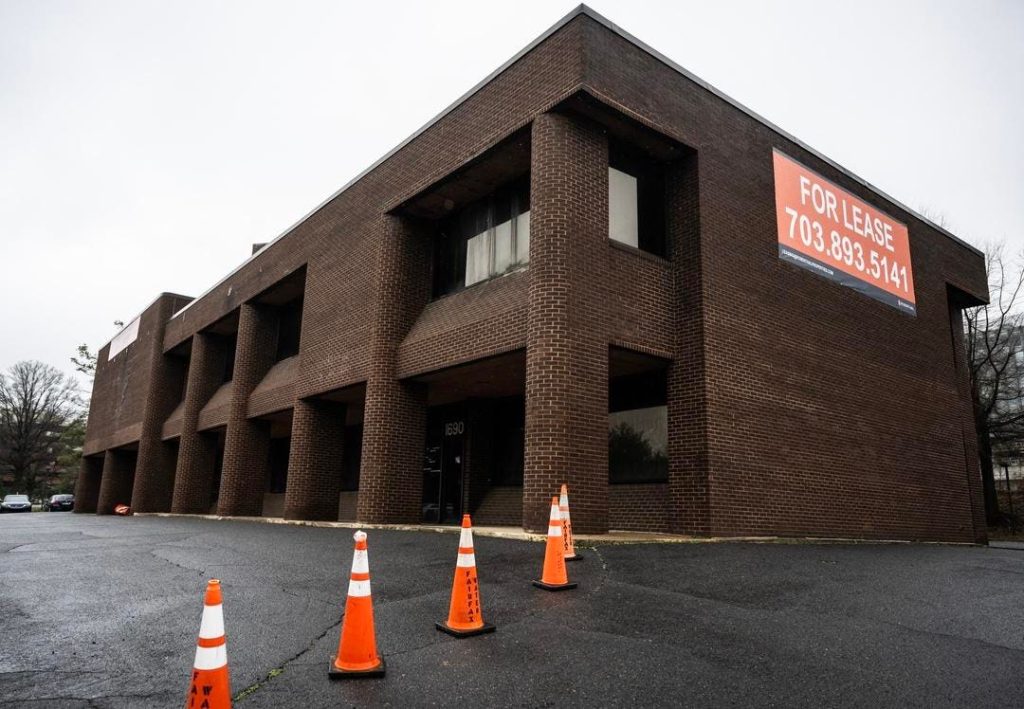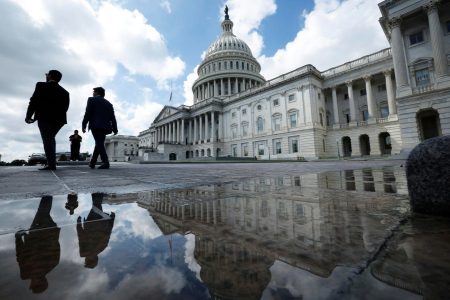Do continuing losses in commercial real estate threaten a national or global financial and economic depression like we faced in 2007? Not at the moment. But we need to be careful, because we live in a risk-prone economy, where the financial sector can cause deep economic problems.
There’s still a lot of damage to come from collapsing office loans, as low-interest loans expire and need to be refinanced at higher interest rates, while office asset values are falling at the same time.
ADVERTISEMENT
A December working paper from the National Bureau of Economic Research provided a detailed analysis of “commercial real estate distress and US bank fragility.” The authors present sobering data that “14% of all (CRE) loans and 44% of office loans” are underwater—that is, “their current property values are less than the outstanding loan balances.”
Wow — 14% of CRE and 44% of office loans are in trouble? Isn’t that a lot?
Well, it’s a lot of dollars, but it isn’t a lot of the total lending pool from banks. The Federal Reserve monitors bank portfolios very closely, and its report for the week ending June 5 showed $17.6 trillion in outstanding bank credit. Total CRE loans were about 17% of that total.
Remember that much of CRE lending isn’t for offices. CRE includes multifamily properties, farmland, retail and hotels, and industrial and warehouses, and several of those sectors are quite healthy.
ADVERTISEMENT
But what about the troubled offices? The St. Louis Fed estimates office loans in 2023 were around 15% of the total CRE market. If that 15% applied to bank CRE lending, then total bank exposure on office loans would be 2.6% of all outstanding bank credit—a big number in dollars, but not a big percentage.
Not all banks have the same exposure to CRE. For major risks to the financial system, we especially want to know about large banks. A recent speech by Fed Governor Lisa D. Cook, chair of the Fed’s Committee on Financial Stability, shows policymakers are paying close attention to their condition.
Cook’s recent remarks at the Brookings Institution detailed the Fed’s findings from April’s Financial Stability Report, assessing overall risks to the entire system. Regarding the banking sector, Cook reported that “the largest and most interconnected financial firms”—the ones we worry most about for a possible system crisis—“appear well positioned to absorb a shock” based on their “strong funding profiles.”
ADVERTISEMENT
Cook correctly notes this strong position is due “in part to the strength of the regulatory regime for these banks.” The 2007 financial crisis shook the system and scared regulators about financial risk. The Fed and other regulators have since stepped up oversight and regulation, a welcome development for our financial and economic security.
Cook specifically discussed CRE and office lending risks. CRE lending—and its risks—are not evenly spread across all banks. The Fed’s data underscore how small banks are the place to look for CRE risk.
Cook noted “CRE loans make up only about 5 percent of total assets at large banks but around 30 percent of assets at smaller banks.” And those “high concentrations” are spurring regulators to get more data and increase oversight.
ADVERTISEMENT
This CRE problem for smaller regional banks is well known to observers and the market. Earlier this month, Moody’s put six regional banks on review for downgrades due to “a substantial concentration” in CRE loans.
Dr. Rebel Cole and colleagues at Florida Atlantic University produce the valuable “U.S. Banks’ Exposure to Risk from Commercial Real Estate,” with periodic updates on overall and specific risks. Their most recent analysis finds 67 of the country’s largest banks with excess CRE exposure “which puts the bank at greater risk of failure.”
Remember, Cook said the 25 largest banks—the main focus of the Fed’s systemic risk concerns—have a CRE exposure around 5%. So, although the Florida Atlantic scholars are identifying risks for relatively sizable banks, they aren’t the system’s biggest.
ADVERTISEMENT
Fed Chair Jay Powell believes there could be bank failures among those CRE-exposed banks. He told Congress in March the Fed has “identified the banks that have high commercial real estate concentrations” and that “there will be bank failures, but not the big banks.”
Some observers aren’t as confident about the lack of systemic risk. Paul Kupiec at the American Enterprise Institute argues that a large number of bank failures, even of smaller banks, “would likely pose a challenge to the deposit insurance fund’s resolution resources,” and “test the public’s confidence in the deposit insurance safety net.”
And we always have to be alert for financial risks we don’t see, and that can affect not only finance, but the real economy. For as the 2007 crisis dramatically underscored, we live in a risk and crisis-prone system.
ADVERTISEMENT
The great economist Hyman Minsky analyzed periodic financial crises. He saw the economic instability emerging from difference elements of finance—savings and loans, third-world debt, mortgage-backed securities—not as isolated mistakes, but as systemic to our stage of capitalism.
Minsky looks ever-wiser as we see how continuing financial and economic risks have been driven by housing markets, dot-com bubbles, municipal debt during Covid-19, and now office lending. Our regulators are doing a good job. But they—and we—will continue facing systemic risks that unexpectedly boil up from finance. This risk pattern is built into our modern financial and economic systems.
Read the full article here










